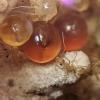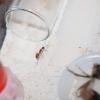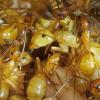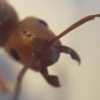I have heard the argument about transmitting parasites, pathogens, or other various diseases, and while this is possibly a valid argument, the current ant laws actually cover this in a completely different way. It's not regulated by an interstate transit ban, but rather the fact that all plant pests, including ants, are illegal to release from captivity, ever. Yes, this is an actual law. I bet most people have never heard of it, because for some reason the antkeeping community only cares about the interstate transit ban and no other parts of the law.
I can't find the section where this is said on hand, but I'm sure I could with some digging and asking around. Even in the exact location where the ant was collected, you are unable to re-release them in the wild for the exact reason of spreading pathogens. With this regulation in place, surely interstate transit should have at least some restrictions lifted, no? Also, if the antkeeping community really cared about this possibility, surely they wouldn't be encouraging people to release colonies that they no longer want, or queens that end up being infertile.
I'm not sure the antkeeping community as a whole does encourage people to release their colonies. I remember a few threads where people brought up releasing them and were told not to due to possible issues. Then others argued why they believed they should be able to release their colonies. So maybe the antkeeping community should make more of an effort to encourage people to not release their colony, but either find another keeper or freeze it. Especially since as you stated it is illegal to release them.
As for why you would still want to restrict the transport of ants is because people will release them. There's always going to be a certain percentage of people that will release their pets/colonies. Either from ignorance of the law, outright disregarding the law, or believing that there's such a small chance any of their specific colonies are infected/will survive that what's the harm. So by restricting the amount of exotic ants being kept, the percentage of releases might stay the same but the numbers of colonies released would be smaller.
Just like how people release their exotic reptiles, amphibians, or fish.
Edited by kounelus, July 22 2021 - 9:34 PM.





























